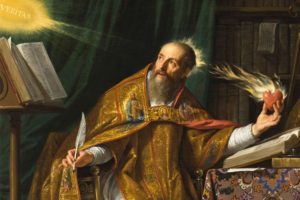Both the topic and the author make this book a must read for all who are interested in present-day Roman Catholicism. Katholische Kirche. Wesen, Wirklichkeit, Sendung (The Catholic Church. Essence, Reality, Mission)[1] is the last volume by Cardinal Walter Kasper, one of the most interesting voices of contemporary Roman Catholic theology. In a 500 plus page book Kasper, now 80 years old, outlines both his theological pilgrimage in the Church and the main tenets of Catholic ecclesiology with particular reference to Vatican II. The book therefore combines autobiographical narratives and thick theological arguments.
Kasper’s previous works (e.g. Jesus the Christ, 1976, and The God of Jesus Christ, 1984) made him one of the leading theologians after Vatican II, sometimes aligned to “progressive” tendencies, but always within the borders of mainstream catholicity. The fact that he was made cardinal and then President of the Pontifical Council for Christian Unity (2001-2010) testifies to his “orthodoxy” from the Vatican’s point of view. Unlike Ratzinger, he did not take part at the Council, though he has been a fervent advocate of it, especially the call for renewal within the Tradition that Vatican II reflected.
At times, he has been played against the “conservative” Ratzinger, but to no avail. For instance, ten years ago a controversy was mounted around an ecclesiological issue between the two, i.e. the ontological primacy of the “one” Church over the particular churches (Ratzinger’s view), or the “particular” churches (Kasper’s) over the one Church. In other words, does the “one and catholic” Church come first and express itself in the particular churches or do the “many and particular” churches constitute the one Church? The solution was very catholic: et-et, both-and, with Ratzinger continuing to stress the “one” and Kasper underlining the “many”!
1. A Vatican II Ecclesiology
This book is the result of a lifetime of reflection on the Catholic Church, its sacramental reality, dogmatic apparatus, historical tradition, and present-day problems and challenges. Kasper pays tribute to his theological fathers that made a lasting impression on him: the XIX century Catholic school of Tübingen (J.S. Drey and J.A. Möhler) and J.H. Newman. The former gave him a “living” sense of the Church as the sacramental body of Christ, the latter instilled in him the sense of “development in continuity” of the Church’s tradition. According to Kasper, Vatican II is the child of the combination of both trends. Its overall significance can be summarized as “a continuity accompanied by a creative renewal” (27).
The main attempt of the book is to articulate a vision of the Catholic Church around the categories of mysterium and communio. The former underscores the sacramentality of the Church, i.e. its being a sign and instrument of communion with God and of the unity of mankind. The latter underlines its catholicity, i.e. the ability to join together both past and future, faith and reason, grace and works, Roman institutions and catholic afflatus, clergy and laity, papacy and movements, living and dead, Christ and Mary, and so on. To this thick Roman Catholic view, Protestant accounts of the church appear to be marred by “ecclesiological docetism” (158) and the difference between the two is “fundamental” (263). Whereas the Church of Jesus Christ subsists in the Roman Catholic Church in its fullness, it also exists in other Christian communities, though in defective ways. Kasper adheres to the “tiered concept” of the Church (261 and 293) whereby the Roman Catholic Church stands in the center and other churches revolve around it depending on their proximity or distance from it.
This is standard Vatican II ecclesiology. Kasper hopes that the “spirit” of the Council will continue to breathe in the Roman Catholic Church to encourage renewal within the parameters of Tradition. In spite of past real or fictional controversies, this program is very close to that of Pope Benedict XVI’s.
2. The Missing Interaction with Modern Evangelical Theology
Throughout the book Kasper interacts with Martin Luther’s writings and theology. The German reformer is read with respectful criticism. His main fault was that he broke with the institutional Church whereas other saints, though critical of, never rebelled against it and its magisterium (229). Other XVI century reformers are less present in Kasper’s horizon. This is understandable given his German provenance. Of course the Cardinal is also very well versed in ecumenical theology and makes extensive use of its history, dialogues and literature, especially those that stem from Eastern Orthodox, mainline Protestant and Anglican churches.
There is only one passing reference to the “Evangelical movements and communities” (53) which are associated with the Global South. Unfortunately, there is not a single reference to a present-day Evangelical theologian or to a significant Evangelical movement such as Lausanne. Given the fact that Kasper was the President of the Pontifical Council for Christian Unity for nearly ten years, it seems that his “professional” interaction with Evangelicals did not raise his interest towards Evangelical theology. There may be a number of reasons for that: 1. A bias concerning Evangelical theology that is not perceived as a serious discourse deserving attention; 2. An evaluation of the Evangelical movement that is not seen as having a coherent or interesting theology worth interacting with (especially its ecclesiology); 3. A lack of Evangelical self-awareness that makes it difficult for Evangelicals engaged in dialogue with Catholics to use Evangelical sources and literature as their working tools; 4. A defective penetration of Evangelical books in official Roman Catholic circles.
There may also be a combination of those. Kasper has keen insight into Catholic and non-Catholic theology, that is, assuming one supplements his treatment with evangelical Protestant thought, without which I’m unsure whether it is properly "Catholic."
Leonardo De Chirico
leonardo.dechirico@ifeditalia.org
Rome, 7th May 2012
[1] I read the Italian edition: Chiesa cattolica. Essenza, realtà, missione (Brescia: Queriniana, 2012). References to page numbers refer to this edition.

![Mission-of-The-Catholic-Church[1] Mission-of-The-Catholic-Church[1]](http://chriscastaldo.com/wp-content/uploads/2012/05/MissionofTheCatholicChurch1_thumb.jpg)



